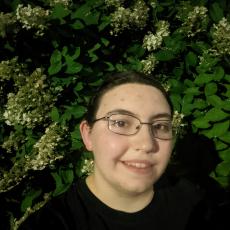
This summer, as a CAFE summer scholar, I had the opportunity to continue my research on the effect of mechanical stimuli on the shoot-borne roots of Brachypodium distachyon in the Hazen Lab. B. distachyon is a model grass species for cereal crops such as wheat. The effect of mechanical stimuli on the shoot-borne roots of cereal crops is important in agriculture, particularly in regards to lodging which occurs when environmental stress, such as wind or driving rain, causes the stem to bend. With the stem bent, the plants lie along the ground, leading to severe loss of yield. The Hazen Lab has developed a system that allows visualization of below ground roots of B. distachyon. The transgenic B. distachyon express the firefly gene for the enzyme luciferase alongside the gene of interest, creating a live-imaging transcriptional reporter system. The bioluminescent light emitted from luciferase cleaving luciferin can be recorded with a highly sensitive charged-coupled device (CCD) camera, allowing for the visualization of gene expression without harvesting, and thereby destroying, the tissue. To observe roots without removing the plants from the growth medium, the plants are grown in rhizotrons at an angle, so that the roots grow along a clear glass surface.
I worked with transgenic B. distachyon with the luciferase expressing ubiquitin promoter, ZmUBI1::LUC, and transgenic B. distachyon with the promoter of CELLULOSE SYNTHASE A 8 driving LUCIFERASE expression, BdCESA8pro::LUC. CESA8 is a protein involved in the synthesis of cellulose in secondary cell walls. I planted both sets of transgenic seeds in 3D printed rhizotrons, and imaged them with the CCD camera. In addition, I had the opportunity to begin the transformation of a new transgenic B. distachyon with the promoter of CELLULOSE SYNTHASE A 4 driving LUCIFERASE expression. Further research is required, and I look forward to continuing my work in the Hazen lab.